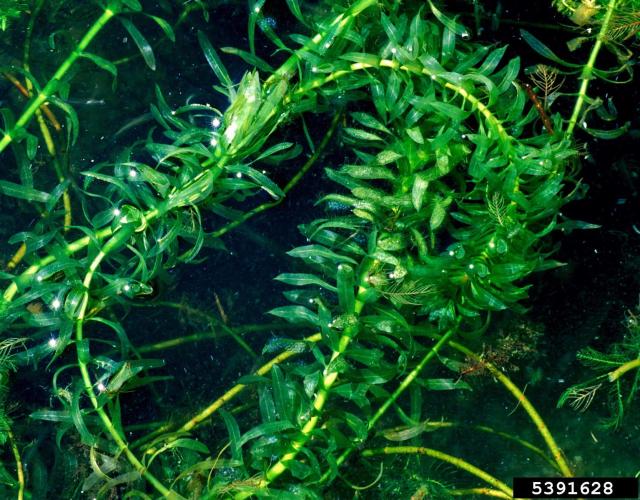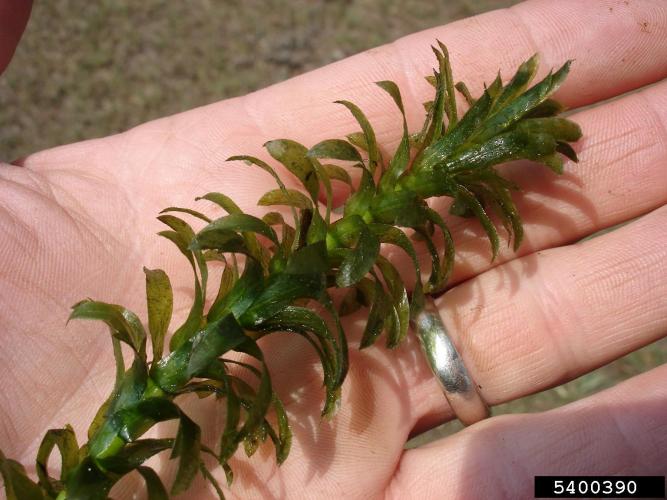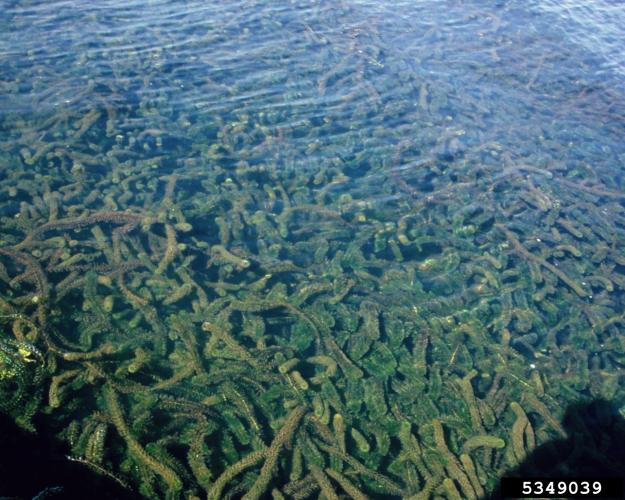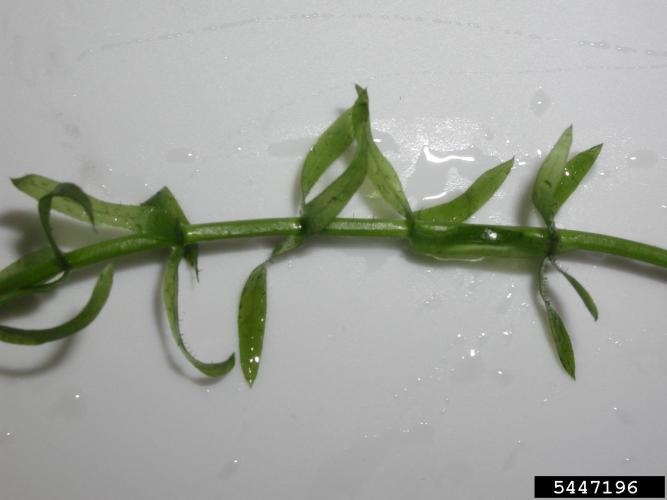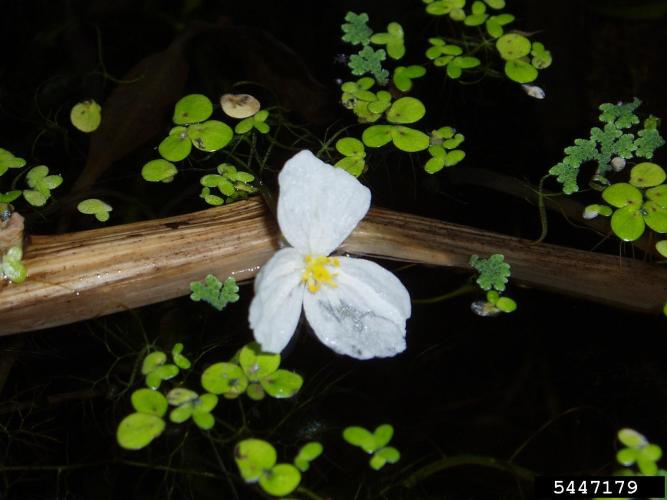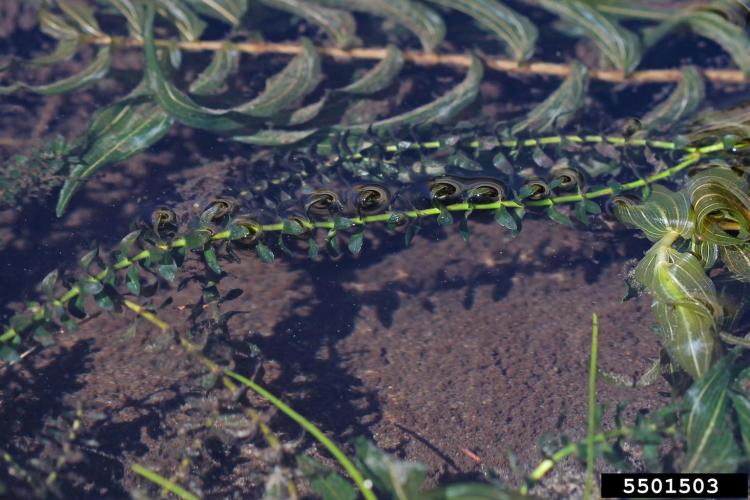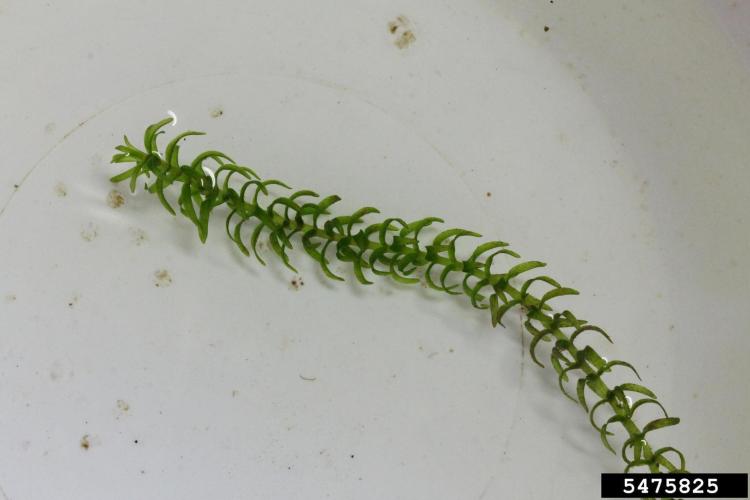Brazilian elodea
Identification
Appearance
Brazilian elodea is a submerged aquatic plant that grows in waters up to 7m deep. While it can be free floating, Brazilian elodea more commonly roots, preferring muddy substrate. Leaves grow in a whorled formation along a central stem, giving Brazilian elodea an elongated, leafy appearance. The stem is stiff and grows until it reaches the water’s surface, where it produces flowers.
Foliage
Brazilian elodea leaves are 1-3cm long and 5mm wide, and very finely serrated. The underside of the leaves have a smooth midrib, which help distinguish Brazilian elodea from Hydrilla, whose midrib is toothed. The leaves are bright green and grow in whorls of 4-8 leaves.
Flowers
Flowers are white and 3-petaled. Several flowers can arise from one plant, growing on peduncles from leaf axils. They grow up to 2.5cm in diameter and sit at or near the water’s surface. The stamens and pistils are elongated and yellow.
View lookalikes from New Hampshire Department of Environmental Services
Biology
Habitat
Brazilian elodea grows in slow-moving freshwater environments and can be found in a wide range of depths, up to 7m. It is also a generalist in terms of temperature and nutrient requirements. Brazilian elodea grows best between 16-28C but is capable of overwintering in freezing conditions. It can survive in low CO2 and light conditions, and high phosphorous and turbidity. Brazilian elodea is susceptible to damage from high intensity heat and light.
Life Cycle
In the US, only male Brazilian elodea plants are present, so asexual and vegetative reproduction are the feasible reproductive means. Vegetative fragmentation occurs by nodes breaking off from a plant and either rooting or growing in free-floating form. This can occur year-round, but Brazilian elodea growth is very slow when temperatures are below 15C, so most prolific reproductive growth occurs when temperatures are above this threshold. The plant can flower biannually, in the spring and again in the fall. The flowers are insect pollinated, and seeds are dispersed and germinate when temperatures rise above 15C. Individual flowers are present for up to two days. Life cycle is dependent on year-to-year temperature trends. The 15C threshold for growth is the most influential factor in determining life cycle. Below the threshold, the plant goes dormant, and above it, growth is rapid.
Ecological Threat
Brazilian elodea can form dense stands that impact water flow and change nutrient composition and turbidity levels where it is present. It utilizes C4 photosynthesis, so is able to survive in relatively low CO2 levels, helping to outcompete native vegetation. This lowers biodiversity and removes habitat for aquatic animals and insects. Additionally, in severe infestations Brazilian elodea has been known to clog aquatic infrastructure and impact recreational activities.
Vermont Distribution
There are no current known infestations of Brazilian elodea in Vermont. An occurrence was reported in 1913 in Windham County but has since been eradicated.
How You Can Help
Prevention is the most effective management strategy. Actions such as cleaning off boots and waders, and cleaning, draining, and drying watercraft before transferring between water bodies can help prevent its spread.
Citations
Photo Credit
5501503, 5475825: Rob Routledge, Sault College, Bugwood.org
5400390: Graves Lovell, Alabama Department of Conservation and Natural Resources, Bugwood.org
5447179, 5447196: Leslie J. Mehrhoff, University of Connecticut, Bugwood.org
5391628: Barry Rice, sarracenia.com, Bugwood.org
5349039: William T. Haller, University of Florida, Bugwood.org
Information Credit
BEST MANAGEMENT PRACTICES - Brazilian Elodea. King County Noxious Weed Control Program, Jan. 2014.
Brazilian Waterweed (Egeria Densa). US Fish & Wildlife Service, Mar. 2018.
USGS. “Brazilian Waterweed (Egeria Densa) - Species Profile.” Usgs.gov, 2016, nas.er.usgs.gov/queries/FactSheet.aspx?speciesID=1107.
